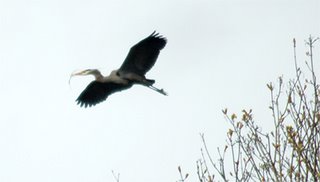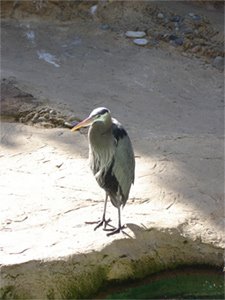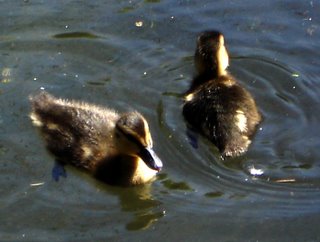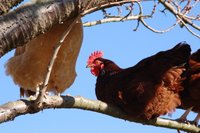Powers of Ten and Shifting Perspectives on Science and Society
"Starting with a view of a billion light-years, the book (like the film) moves inward, with each page being at one-tenth the scale of the previous one. In 25 steps, you're looking at a picnic by the shores of Lake Michigan, then plunging into a human hand, down through the cells inside it, the DNA inside the cells, the atoms inside the DNA, and the subatomic particles inside the atom. By the time you've gone a total of 40 steps, you're in a world of quantum uncertainty."
Each shift in perspective changes the view as familiar objects are seen in new ways.
My life has done the same thing, except in the opposite direction. For the first 25 years or so, my perspective was from the nuclear level as all the electrons revolved around me. And I would have completely agreed with these opinions in the comments at Epigenetics News:
"I did get a discussion about this topic going in the lab today (three postdocs, a tenured faculty member and a couple of other students). Surprisingly, there was very little sympathy for the high school students seeking biotech internships. The general consensus was that even if a student was taken on as an intern during the summer, it would take so much time to “get them up to speed” without any background knowledge coming in (and potentially no experience working a real job at all) that it just wouldn’t be worth the effort."As a 25 yr old graduate student, I still would have agreed.
I had to TA during the entire first year of graduate school and I didn't particularly like it. Why should I work hard as a TA when I had my own research to do and courses to pass? Why lose my valuable research time? Why bother? It wasn't my fault that students who were seniors in college couldn't do the basic algebra we asked for in our microbiology course.
Let's fast-forward five more years to age thirty.
Now, I'm a post-doc with a baby who goes to day-care. My non-profit research institution holds Monday afternoon post-doc research seminars at 5:15 pm that last until 6:30. But my day care provider requires that children be picked up at 5:00 pm, and since I'm making $17,000 a year as a post-doc, and my husband is a grad student, we only have one car (which I drive). So I go to the scientist in charge of the weekly seminar and ask if we can move the time, only to be told "no one else considers this to be a problem." Oooh, that was a jarring shift in perspective. Maybe the nuclear model has to be replaced. I advance grimly to the cellular level.
Five years later, my perspective shifted farther outward to the organism view. And I still would have agreed with the lab in Epigenetics News. Why have high school students in the lab? What could they do?
I'm teaching in a community college. I'm about the same age as many of my students (the median age is 33), and I've gone from wondering why anyone would hire a community college student to wondering why they wouldn't. I've watched community college students, many with bachelor's degrees, some with kids, go to school full-time, and work at both jobs and internships, sometimes simultaneously. And I have developed a whole new level of respect and awe for what people can do.
I've also learned about multiple intelligences. Students can get A's on every assignment and write brilliant essays on exams and set boxes of Kimwipes on fire when they get a job in a lab. There are plenty of opposites, too, like the students who get C's on every test and become highly-valued technicians or even go on to graduate school. One of my former students, with only a two-year degree, gave a key note talk at cytokine conference and one student started his own biotech company.
Well, here we are, ten years later, and I'm starting see the world from the ecosystem perspective. I work at a bioinformatics company and have one child in high school and one in middle school. I know now, how efficiently the public school system - at least middle school - turns kids off of science early on. I no longer think that we can afford to wait until college - or in the case of community colleges - after college - to counteract the impressions that kids get of science and scientists.
Not only have I come to appreciate the broad spectrum of capabilities that high school students represent, but I can stand back, now, and see other goals beyond getting a nice-looking gel or cloning that fragment of DNA.
Why do I think it's important to find science opportunities for high school students and undergraduates?
There are many reasons. But looking from an ecosystem view, internships are one way to help society achieve the goals to which many scientists give lip service and some even work to support. These are goals like a scientifically literate society, a diverse society, and a society that doesn't view science as an elitist enterprise that's only open to rich white kids. Because, like it or not, that is how the outside world views the academy.
If we had a scientifically literate society we would be working on serious issues like global warming and over-fishing and disappearing species. We wouldn't have to waste our time with silly distractions like intelligent design. I don't think there would be such an anti-science sentiment on the part of the general public (1) if it were understood that strong science empowers all of us.
Of course, neither University research labs nor biotech companies are or should be charities, and my experience has been that they can't be relied on to act in a consistently charitable manner, anyway. If we are to increase diversity in science and develop a scientifically literate society, we need a workable way to open the laboratory doors and let in more students.
References:
1. Liza Gross. 2006.Scientific Illiteracy and the Partisan Takeover of Biology.PLoS Biol 4(5): e167.
Subject: Education
technorati tags: biotechnology,
teaching-carnival
education
science education











